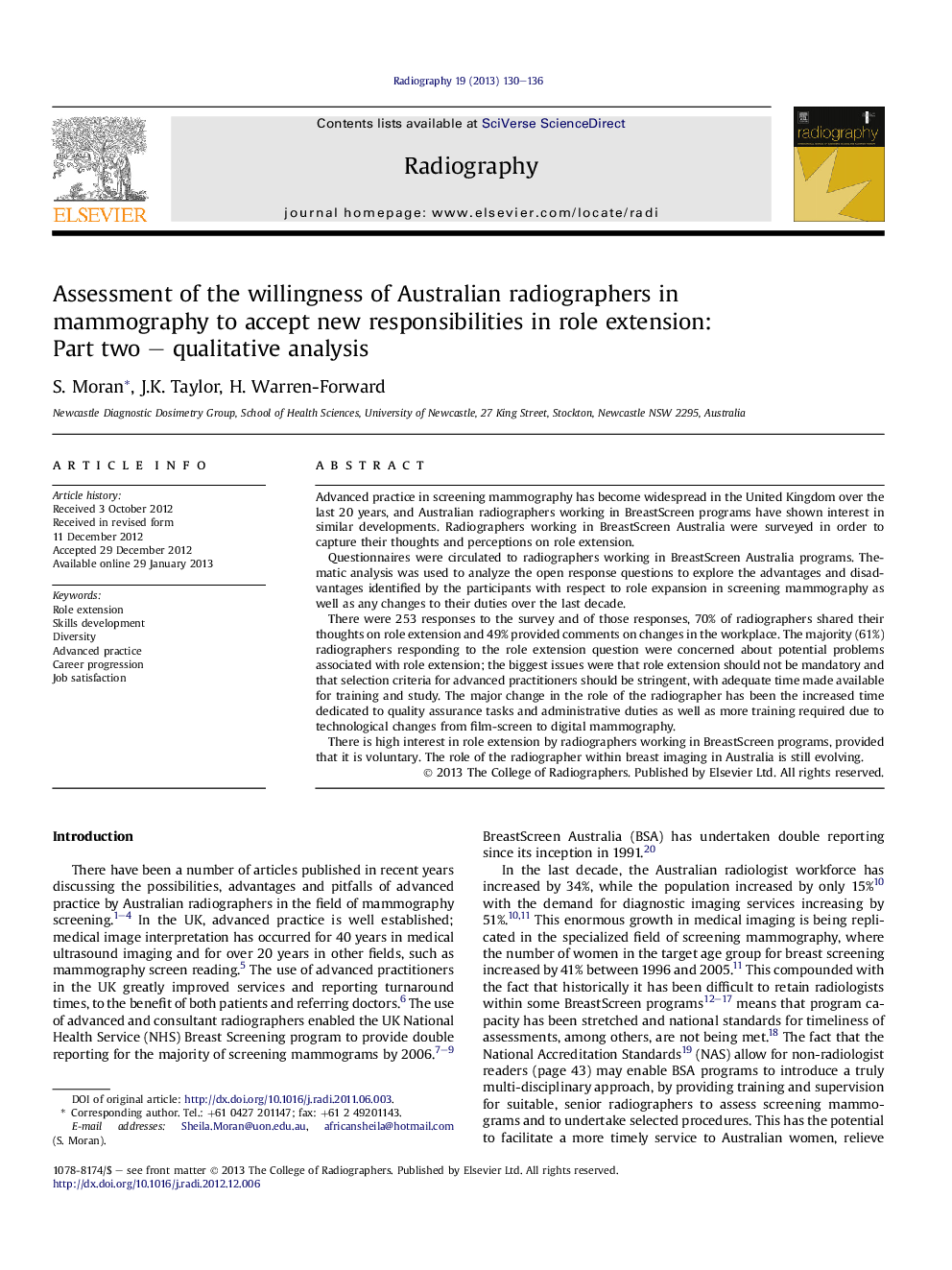| Article ID | Journal | Published Year | Pages | File Type |
|---|---|---|---|---|
| 2726389 | Radiography | 2013 | 7 Pages |
Advanced practice in screening mammography has become widespread in the United Kingdom over the last 20 years, and Australian radiographers working in BreastScreen programs have shown interest in similar developments. Radiographers working in BreastScreen Australia were surveyed in order to capture their thoughts and perceptions on role extension.Questionnaires were circulated to radiographers working in BreastScreen Australia programs. Thematic analysis was used to analyze the open response questions to explore the advantages and disadvantages identified by the participants with respect to role expansion in screening mammography as well as any changes to their duties over the last decade.There were 253 responses to the survey and of those responses, 70% of radiographers shared their thoughts on role extension and 49% provided comments on changes in the workplace. The majority (61%) radiographers responding to the role extension question were concerned about potential problems associated with role extension; the biggest issues were that role extension should not be mandatory and that selection criteria for advanced practitioners should be stringent, with adequate time made available for training and study. The major change in the role of the radiographer has been the increased time dedicated to quality assurance tasks and administrative duties as well as more training required due to technological changes from film-screen to digital mammography.There is high interest in role extension by radiographers working in BreastScreen programs, provided that it is voluntary. The role of the radiographer within breast imaging in Australia is still evolving.
